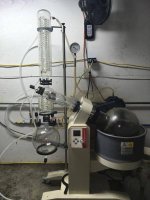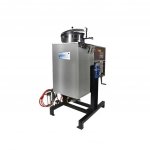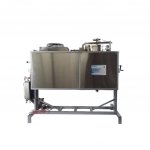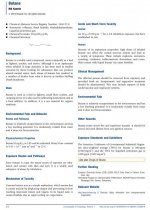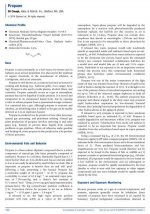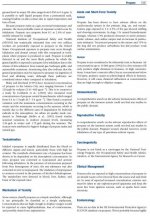lol with such a large amount we've always just hooked a hose from the fractional to the injection port for the roto and put an extra long injection tube on first inside the ball. then turned on the vac on the fractional and pulled as much as we could via the hose and then rehooked everything back up and went about our jobs. we wouldn't get it all out of the roto and wouldn't worry about it unless we switched strains or parameters of something. then we would do exactly as you listed above.
I have a question about ethanol distillation, but not using a roto. Say that I have a 5 liters to distill using a 2l mantle, which I would do in 3-4 runs. When I start the process and pull vacuum, temps drop in the flask to the high 50s F and as the ethanol evaporates over an hour temps rise to the 90s. I am trying to keep terpenes, so high temps are bad. I found that once I get to ~90% evaporation temps can really shoot up fast (over 100F) if my mantle is too hot, but if I don't push temps than purge is too runny to start.
So my question is this: Is it advantageous to just leave the extract in my boiling flask (at 80-85% etoh evaporation) and then add another liter or so of solution to flask each time temps reach 90s until gone? Logic would be that I only have to push temps higher once and a larger volume of extract mass could reduce the explosive out gassing that splatters the walls of flask towards end.
I appreciate any insight.
WFF

